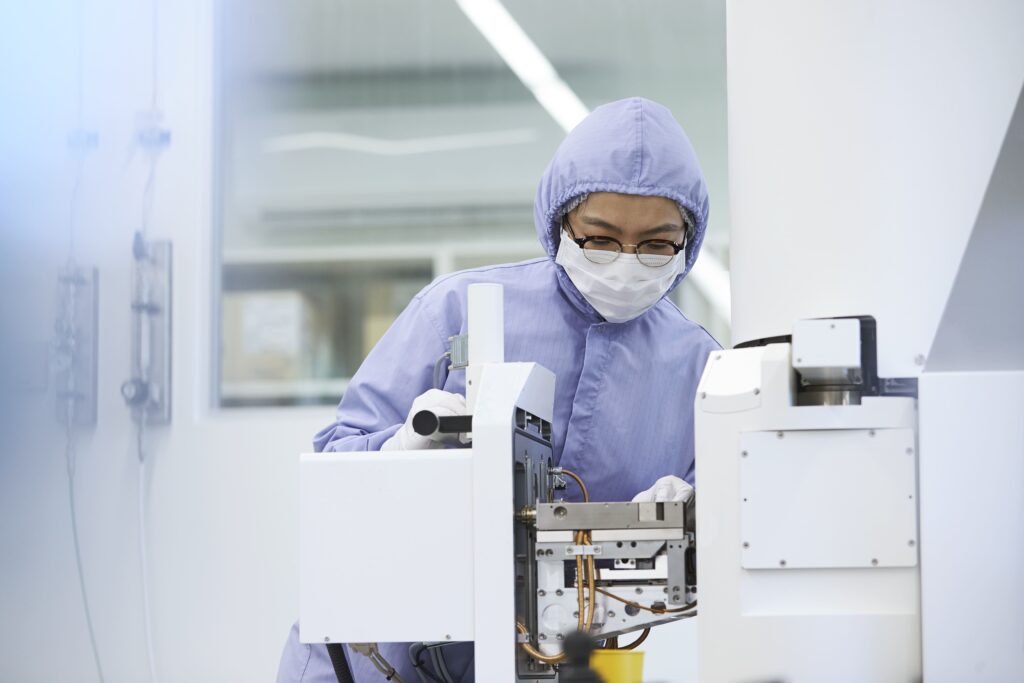Insider Brief
- Researchers report on a high-tech layered hybrid superlattices (LHSLs) sandwich that combines crystalline atomic layers with molecular interlayers, creating a versatile new material platform for quantum computing and electronics.
- LHSLs use van der Waals forces to integrate molecular layers within crystalline structures without disrupting atomic bonds, allowing precise customization of quantum properties like charge and spin.
- This design could lead to room-temperature quantum devices and opens up possibilities for more adaptable, efficient quantum materials that support applications in computing, sensing and beyond.
- Image: Nature study
Mmmm… atomic-scale sandwich.
A team of scientist, which includes members from the U.S. and China, report a new “layered” approach to building hybrid quantum materials could pave the way for more adaptable and powerful quantum devices. The researchers describe the innovation — called layered hybrid superlattices (LHSLs) — in the perspectives section of Nature.
The team writes that LHSLs consist of layers of crystalline atomic structures interspersed with self-assembled molecular layers. At the risk of making you hungry, you could consider this an atomic scale “sandwich” that layers sturdy, structured slices of crystalline “bread” with customizable, versatile molecular “fillings” in between. Like any good sandwich, each layer brings its own unique flavor and texture — for example, the crystalline layers provide stability and conduct electricity, while the molecular layers add flexibility and allow for specific quantum properties.

This delicious combination creates a new material that has both strength and adaptability, ideal for advanced quantum computing and electronic applications.
Traditional crystalline solids, like those used in silicon-based electronics, are valuable for their consistent long-range order, but they lack the flexibility needed for diverse electronic applications. Synthetic molecular systems, by contrast, offer tunability and customization but are often too fragile for large-scale electronics. By combining these two systems into LHSLs, the researchers hope to harness the strengths of both.
How It Works: Merging Crystals with Molecules
The LHSLs are created using two-dimensional atomic crystals, which are layered structures of atoms held together by non-bonding van der Waals (vdW) forces — which are the weak attractive forces between molecules. These forces allow the insertion of various molecules between the crystalline layers without disrupting the atomic bonds, making it possible to customize the material’s properties at a molecular level. Unlike traditional solid-state materials, which require matching lattice structures, LHSLs allow for diverse chemical compositions without the risk of strain or defects from mismatched atoms.
Each layer in an LHSL can be carefully chosen based on the desired properties, like conductivity or magnetism. For example, one layer could be a semiconductor, while the interspersed molecules could add properties like magnetism or spin, which are crucial for quantum computing. This structure creates a “designable three-dimensional potential landscape,” a flexible framework that can be tuned to achieve specific quantum effects.
Implications for Quantum Information Science
The potential impact on quantum information science may be apparent now. Quantum materials are known for their unique properties, like superconductivity and entanglement, that are essential for advanced technologies like quantum computers and quantum sensors. However, engineering materials to support these properties in a stable, scalable form has been a major hurdle.
By combining different materials within an LHSL, researchers can create a platform where quantum effects are enhanced and controlled in ways previously impossible. The study suggests that this approach allows for the deliberate design of materials that support quantum interactions, such as charge or spin manipulation, on an atomic level. This could lead to the development of highly efficient quantum devices that operate at room temperature, bypassing the need for complex and costly cooling systems.
For example, embedding magnetic molecules within a semiconductor layer in an LHSL could enable new types of devices that use magnetism to control electrical current, potentially useful for fault-tolerant quantum computing. This layered design could also enable the construction of quantum devices with unique properties, such as the ability to support complex quantum states over longer distances.
Challenges and Limitations
The study highlights some limitations with the approach. One of the main challenges is achieving consistent long-range molecular ordering within the LHSLs, which is crucial for stable quantum effects. In typical molecular systems, molecules can move or change position, disrupting the ordered structure needed for electronic consistency.
Another challenge that would need to be solved is the difficulty in measuring the precise molecular arrangement within the layers. While techniques like scanning tunneling microscopy can provide surface images, determining the structure within the layered material remains a challenge. Advanced methods, such as single-crystal X-ray diffraction or electron diffraction, may be necessary to fully understand the structural arrangement within these hybrid materials.
Predicting the properties of these complex materials is also not a trivial issue due to their large unit cells. Each LHSL contains multiple layers and molecular arrangements, making traditional computational methods insufficient. New theoretical models might be required to simulate the electronic structures of these systems accurately and affordably. This adds an additional layer of complexity in designing LHSLs with specific, predictable properties.
A New Frontier in Quantum Materials
With those limitations in mind, the researchers see LHSLs as just the beginning. With advances in molecular design and assembly, they envision a future where scientists can create a wide array of artificial solids tailored for specific quantum functions. This modular approach could enable customized electronic structures and manipulate quantum states at the atomic level, leading to breakthroughs in energy-efficient electronics, spin-based transistors and quantum devices.
Further studies are likely to focus on expanding the range of materials that can be incorporated into LHSLs. The team hopes that innovative chemistry will allow for the use of more diverse molecules, enhancing the functional variety of these materials. Additionally, efforts to improve the molecular ordering within the layers could make LHSLs more stable, paving the way for industrial applications.
The versatility of LHSLs also opens up the possibility of creating materials with entirely new properties that go beyond current limitations. In traditional electronics, achieving specific properties often involves a narrow set of materials, such as silicon or gallium arsenide. LHSLs offer a virtually limitless combination of molecules and crystals, meaning researchers could theoretically design materials with properties that do not exist in nature.
The Broader Implications — What Does This Mean For Quantum Science?
If successful, LHSL technology could add a new twist in the landscape of quantum information science. By making it easier to construct devices that harness quantum effects, LHSLs could accelerate the development of quantum computers, sensors and other technologies that depend on precise control of quantum states. This may lead to advances not only in computing but also in fields like medicine and materials science, where quantum effects can be used to improve drug discovery or create stronger, lighter materials.
The ability to control quantum properties in materials at room temperature could potentially be a leap forward. Currently, many quantum devices require extremely low temperatures to function, which limits their practical applications. LHSLs could open up new avenues for quantum technology by making it more accessible and reducing operational costs associated with temperature control.
The research team included: Zhong Wan and Xiangfeng Duan from the University of California, Los Angeles; Qi Qian from The Chinese University of Hong Kong, Shenzhen; and Yu Huang, also from the University of California, Los Angeles.

















